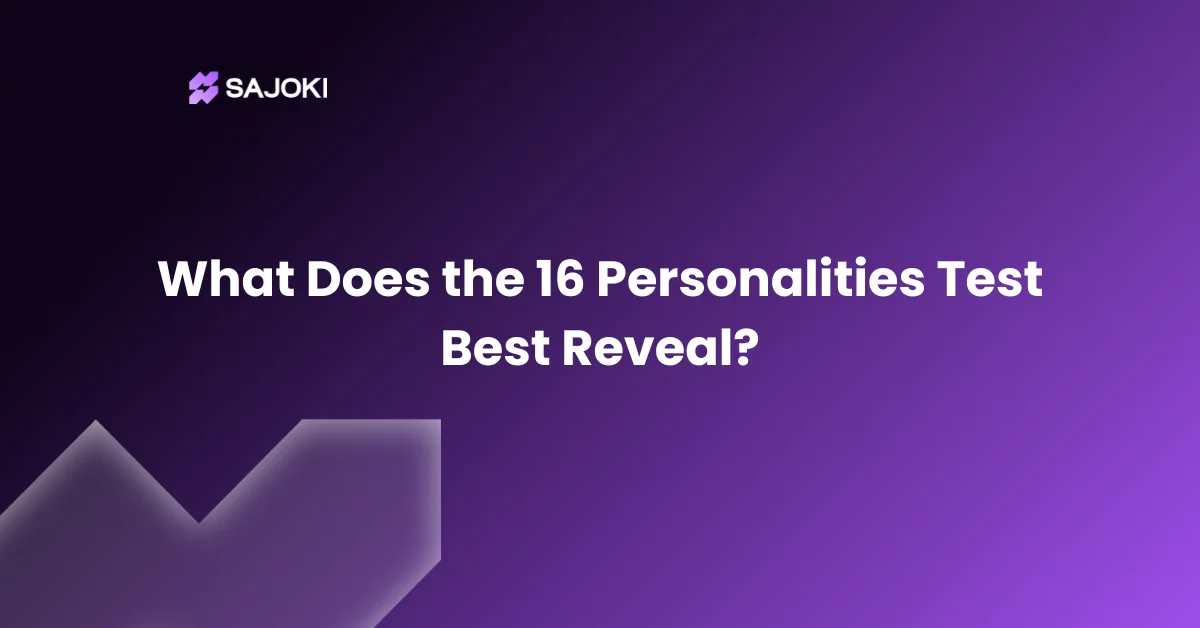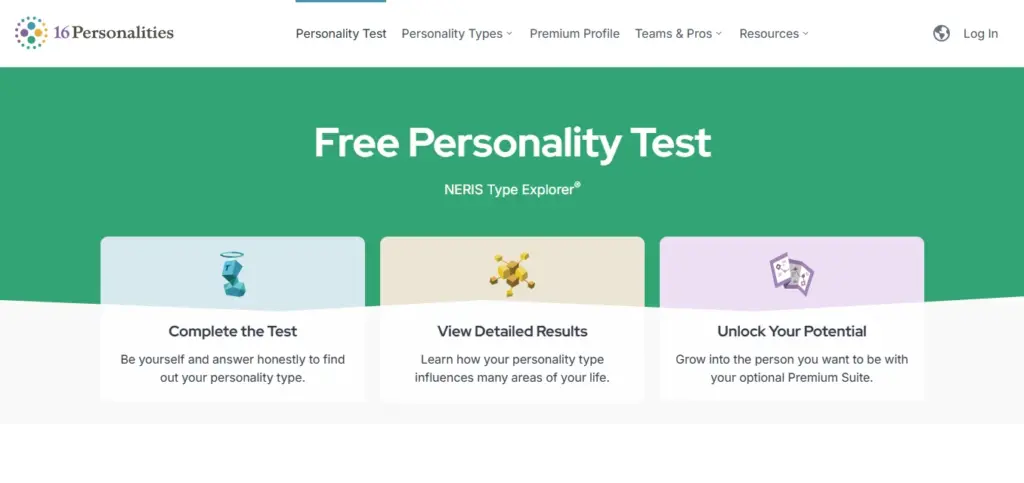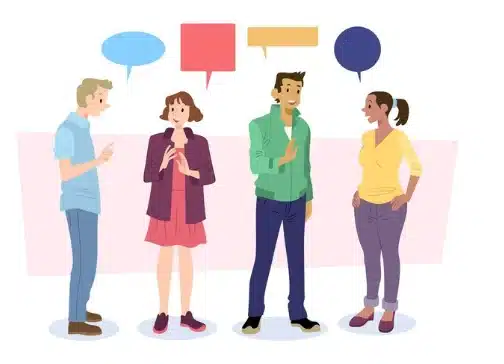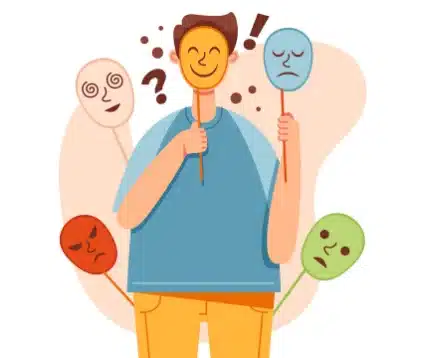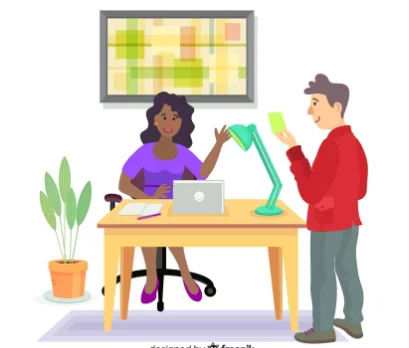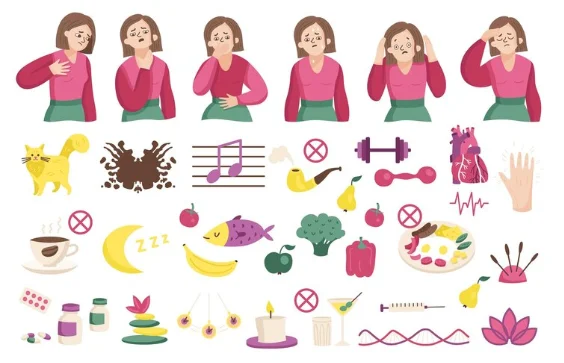Human nature is complex, but tools like personality tests make it easy. One of the most popular tests is the 16 Personalities test, a modern reworking of the Myers-Briggs Type Indicator (MBTI). It brings together psychological insight and ease, which makes it useful for education, employment, and relationships.
So what does the 16 personalities test best reveal?
It identifies your underlying psychological type in respect of four dichotomies: introversion and extraversion, sensing and intuition, thinking and feeling, and judging and perceiving. The test classifies you into one of 16 types and tells how you deal with information, interact with others, make decisions, and organize your life.
If you’re interested in knowing what motivates your actions or how your personality influences your relationships, read on. This blog will explore what the 16 Personalities test simply best tells us and how that information can revolutionize your self-knowledge and everyday encounters.
Understanding the Core of the 16 Personalities Test
Before diving into the details, it’s essential to understand the framework. The test categorizes people based on four pairs of preferences:
- Introversion (I) vs. Extraversion (E)
- Sensing (S) vs. Intuition (N)
- Thinking (T) vs. Feeling (F)
- Judging (J) vs. Perceiving (P)
By combining these traits, we get 16 personality types like INFP, ESTJ, or ENTP. Each has its own strengths and potential weaknesses.
The MBTI-based approach provides a comprehensive look at your mental wiring. It’s about how you gather information, process it, and act on it. This makes it practical for real-world insights.
How the Test Works
The 16 personalities test uses a set of statements to measure preferences. The respondents mark the level of agreement they have with each statement. The test measures four general dichotomies and one other role/function aspect.
The result is a type like INFJ or ESTP. Each type says something different about how one thinks, feels, and behaves. These combinations determine your perspective and decision-making patterns.
The 16 Personalities model is intended to make in-depth psychology accessible. It is precise and applicable, thus enjoyed personally and professionally.
It is widely used in schools, in workplaces, and in counseling centers. People use it to better understand communication style, compatibility, and even career suitability.
10 Key Areas the 16 Personalities Test Best Reveals
This quiz brushes on a couple of personality areas. Each one covers a different level of your emotional and behavioral domain. What the 16 Personalities test most shows you is:
1. Communication Style
The test explains whether or not you prefer to communicate openly or implicitly. It also shows how you react under pressure from social situations or when in conflict.
Introverts may prefer written communication or one-on-one communication. Extroverts are more comfortable with group communication. This may influence your ability to work well with others.
2. Emotional Processing
Sensitivity and emotional reactivity vary by type. Feelers are empathic and concerned with harmony. Thinkers are more analytical and solution-oriented.
Awareness of how you process emotions helps with conflict and stress resolution. It also improves empathy and relationship quality.
3. Decision-Making Style
Some rely on facts and analysis. Some rely on values and regard for others. The test tells you what motivates your thought process.
This is crucial for leadership and teamwork. Judging types plan and set routines, whereas perceivers are flexible and spontaneous.
4. Work Preferences
The test tells you if you like structured or flexible situations. It tells you how much independence, cooperation, or clear objectives you want.
Thinking types thrive in analytical careers. Feeling types thrive in helping careers. These tendencies fall into some career categories.
5. Social Behavior
Do you live off people or privacy? This influences your social category, recreation, and how you use downtime. The test indicates your social comfort zone.
Knowing this helps to make the right choice of lifestyle. It also makes it easier to sense and respond to other human beings’ needs.
6. Stress Triggers
There are some stress triggers for each personality type. ISTJs, for example, don’t enjoy routine disorganization. ENFPs don’t enjoy restrictions on imagination.
Once you have your triggers, you can more easily manage stress and avoid burnout. This improves emotional health and performance.
7. Leadership Qualities
The test measures leadership skills like decisiveness, vision, or compassion. ENTJs lead boldly, and ISFJs lead with service and support.
Having knowledge of your leadership style makes you a better leader. It also makes people trust you.
8. Learning Styles
Sensing types prefer facts and experiences. Intuitive types prefer theories and concepts. Understanding your style improves studying or training.
It improves memory and comprehension. Teachers and trainers can also adjust the material based on this understanding.
9. Relationship Compatibility
Compatibility is on the basis of shared understanding and values. The test determines what you seek in a partner.
It reveals emotional needs and conflict styles. This results in long-term compatibility and fewer misunderstandings.
10. Career Paths and Job Fit
The test matches personality types with careers. For example, INFPs can be good at writing or counseling, while ESTJs can enjoy management.
It helps students choose majors and employees plan careers. It enhances job satisfaction and performance.
The Cognitive Processes Underlying the Test
Each of the 16 types is a unique combination of cognitive processes. They are introverted or extroverted versions of sensing, intuition, thinking, and feeling.
For example, INFJs possess introverted intuition as their dominant function. They possess a vivid future vision. ENTJs possess extroverted thinking as their dominant function, and they initiate goal setting and action.
Knowledge of your function stack provides you with depth to self-awareness. Not only do you know what you do, but you also understand why you do it.
It also describes how you interact with others of different types. Differences generally arise from misunderstanding different functions.
What Are the Uses of the 16 Personalities Test in Real Life?
Let’s explore how people apply their personality knowledge practically. From career to relationships, the benefits are wide-ranging.
1. Career Planning
Knowing whether you are detail-oriented or visionary affects job satisfaction. The test shows which roles align with your core traits.
This makes job hunting more strategic. It also helps in transitioning careers.
2. Workplace Collaboration
The test highlights how you respond to deadlines, stress, and teamwork. It’s often used in corporate team-building.
Colleagues can use it to improve communication and avoid misunderstandings. Everyone benefits from a more harmonious workplace.
3. Academic Success
In school, some students learn better with structure, others with freedom. The 16 personalities test shows which environment suits you.
It can guide study methods, group work preferences, and even the choice of major. Education becomes more tailored.
4. Relationship Development
Romantic or platonic relationships improve with understanding. The test outlines how people connect, express love, or handle conflict.
Partners use it to bridge gaps and appreciate differences. Friends use it to resolve tension.
5. Parenting Styles
Parents also use personality tests to understand their child’s needs. An intuitive child may crave imaginative play. A judging child may prefer routine.
Knowing this leads to more supportive parenting. It reduces conflict and improves communication.
6. Conflict Mediation
The test provides insight into conflict resolution styles. This is useful in mediating personal and professional disagreements.
Understanding how each type argues or negotiates fosters better outcomes. It helps create compromise instead of confrontation.
7. Leadership Training
Corporate training often includes personality testing. It identifies leadership potential and gaps in managerial styles.
Trainers use results to customize learning paths. This creates more authentic, effective leaders.
8. Therapy and Counseling
Therapists use personality types to customize sessions. Understanding how a client processes emotion and thought helps shape the conversation.
It fosters stronger therapeutic relationships. Progress becomes more visible and targeted.
9. Habit Formation
Understanding your type shows what motivates you. Perceivers may need reminders; Judgers benefit from set routines.
This helps design study habits, productivity hacks, and fitness routines that last longer.
10. Social Media Content Creation
Content creators use personality types to connect with their audience. Whether it’s humor, advice, or storytelling, knowing your type can improve messaging.
It also helps personalize branding and engagement strategies. This builds a more loyal audience.
Platforms That Use the 16 Personalities Model
Several platforms incorporate the 16 Personalities framework into their tools. These range from personal development apps to recruitment software.
- 16Personalities.com: One of the most popular and user-friendly versions of the test. It offers a modern breakdown of MBTI types and insightful summaries.
- Truity: Another widely used platform that provides both free and paid personality reports. It includes career matches and relationship advice.
- HumanMetrics: A more traditional MBTI-style site, often used in academic and HR settings.
- SAJOKI: Uses personality frameworks, including MBTI-inspired models, for matching individuals to roles and development paths in a professional setting.
- Crystal Knows: Leverages personality typing for sales, hiring, and team communication by analyzing public data and assessments.
- 16 Types: Offers in-depth MBTI-style test results with cognitive function insights and comparative type analysis.
- Psychologia.co: Integrates MBTI-based insights into coaching and personal development plans.
- MBTIonline.com: The official platform of MBTI, used by professionals and institutions globally for licensed assessments.
These platforms offer variations in test structure and insights, but all aim to make personality-based development more accessible.
How the Test Supports Development
The test will not box you. Instead, it illustrates areas that you might choose to work on. For instance, a perceiver might consider enhancing time management.
It does allow for personal growth and personal development. If you understand yourself, then it is easier to change.
It also improves communication. People are more likely to speak freely when they feel heard. That makes it valuable both professionally and personally.
Recognizing your limits and strengths keeps you grounded. The test encourages acceptance as well as growth.
Frequently Asked Questions
Can your personality type change over time?
It can change a little, particularly due to what happens in your life or as you mature, but your fundamental qualities generally remain the same.
Is the 16 personalities test scientifically valid?
While not infallible, it’s based on Jungian psychology and helpful in most aspects of life.
How reliable is the test as a career guidance instrument?
It gives good advice, but needs to be supplemented with experience and interest.
Do companies actually use this test?
Yes, many companies use it for employee development, recruitment, and training.
Can introverts and extroverts coexist?
Yes, if they understand and appreciate each other’s communication and energy needs.
Conclusion
In short, what the 16 Personalities test best picks up is the way you think, relate, decide, and react under pressure conditions. It offers a systematic model to understand yourself and others better.
If you are seeking career choices or improving communication, the test is a powerful tool. So, use it properly and you will benefit in numerous ways.
